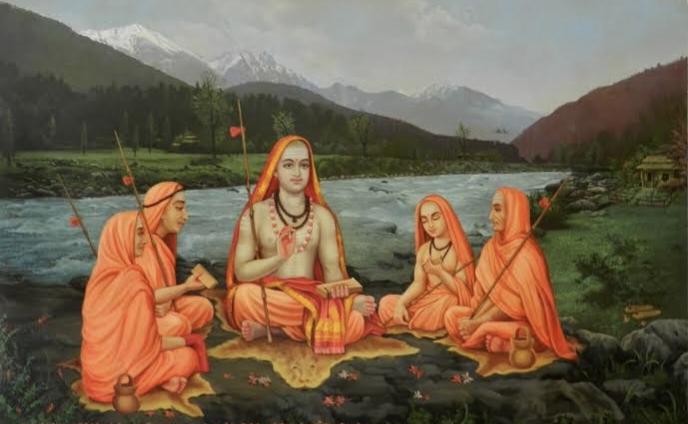- This topic has 0 replies, 1 voice, and was last updated by .
-
AuthorPosts
-
March 7, 2024 at 8:42 pm #1786Up::21
In Sanatan Dharma, or Hinduism, the role of gurus (spiritual teachers) is central and highly revered. Gurus play a crucial role in guiding individuals on their spiritual journey and helping them attain spiritual liberation (moksha). Here are some key aspects of the role of gurus in Sanatan Dharma.

1. Diksha Guru: This is the chief guru who gives spiritual initiation (diksha) to the disciple through a formal occasion called the Diksha ceremony. The diksha guru introduces the disciple to a particular mantra, god, or theological path, establishing thereby a sacred relationship between the disciple and the chosen path.
2. Shiksha Guru: The Shiksha guru is the instructing guru who is responsible for providing spiritual guidance, instructions, and teachings to the disciple. This guru assists the follower in the process of spiritual comprehension, practice, and scripture interpretation, and provides the support needed along the spiritual path.
3. Sthapaka Guru: Some traditions, among them the ones that involve temples or institution building, feature the sthapaka guru as the founding guru who takes care of such institution construction, consecration, and administration. They are in charge of the spiritual and ritualistic tasks.
4. Pracharaka Guru: The pracharaka guru is the guru who is the preacher and who expounds the doctrines of Sanatana Dharma through sermons, discourses, lectures, and other means of communication. They are the medium through which people learn religious knowledge and who set an example by adhering to dharma.
5. Acharya: An Acharya is a knowledgeable teacher or preceptor who has in-depth knowledge of scriptures, rituals, and philosophical thoughts. They act as the teachers who impart knowledge as well as guide disciples in different areas of Hinduism.
6. Satguru: The satguru is the embodying principle, the true guru, which is sometimes a realized master or enlightened being helping disciples to achieve self-realization and liberation (moksha). The Satguru is the ultimate spiritual truth itself and the guiding light for those on the spiritual search.
7. Grihastha Guru: In the grihastha ashram or householders’ stage of life, the grihastha guru refers to the spouse or the eldest family member who instructs the household members about good morals, ethics, and spirituality. They pass on family traditions and spiritual development from one generation to another.
These are just a few examples of the diverse roles and types of gurus found in Sanatana Dharma. Each guru may specialize in different aspects of spiritual guidance and may hold various titles or designations based on their specific role and expertise.
Signifance of Gurus
Spiritual Guidance: The gurus are the spiritual guides and instructors, whose roles are to explain to their shishya, the principles of dharma (righteousness), karma (action), and moksha (liberation). They reveal the essence of being, the meaning of life, and the way to reach the highest self.
Initiation (Diksha): Gurus begin the development process for their shishya by initiating them into spiritual practices and rituals after a sacred ceremony that they call diksha, which conveys the beginning of the disciple’s spiritual journey. With diksha, the guru bestows spiritual advancement by endowing the disciple with mantras, meditation techniques, and spiritual blessings.
Role Model: Gurus act as a model for their shishya by manifesting the characteristics of compassion, wisdom, humility, and devotion. In this way, gurus lead their shishya to emulate their virtuous lives and to follow a fully righteous path.
Transmission of Knowledge: Gurus are the ones who usually transmit sacred stories or teachings from ancient scriptures such as Vedas, Upanishads, and Bhagavad Gita to their students. This is the knowledge of such a culture that is preserved by an oral tradition, thus making it always authentic, and thus authenticity and continuity of generations are maintained.
Dispeller of Ignorance: Gurus enlighten their shishya by liberating them from the affliction of all sins by eliminating the spiritual ignorance, false notions, and misconceptions that by blind them from being liberated from samsara. They clarify and offer comprehension to people of who the Reality is and what the actual self (atman) is.
Personal Mentorship: Gurus offer individualized guidance and support to their shishya, addressing their spiritual needs, doubts, and challenges. They are the heart of the community and give shishya the courage to make choices while they guide them in the process of living their lives.
Sacred Relationship: The relationship between guru and shishya is considered to be extremely sacred and special. The disciple entrusts the guru with his/her knowledge and wisdom and follows his/her guidance, while the guru fosters the disciple’s spiritual growth with unconditional love and compassion.
Community Leadership: Gurus are often considered to be leaders in their communities, guiding people in religious practices. rituals spiritual meetings. They serve as spiritual guides, conduct ceremonies, and impart lessons through which members of the community achieve balance and happiness.
Preservation of Tradition: Gurus are seen as the sakekeepers not only of traditions and practices but also of the continuity of these traditions in the modern world. They uphold the ideals and guiding principles of Sanatan Dharma and pass them on to the generations after them.
Gurus are respected teachers in Sanatan Dharma who show their followers the path to divine consciousness, providing knowledge, compassion, and divine grace during this spiritual development. after god They hold a special place in the hearts of devotees,
- This topic was modified 1 year ago by .
- This topic was modified 1 year ago by .
Attachments:
You must be logged in to view attached files. -
AuthorPosts
- You must be logged in to reply to this topic.